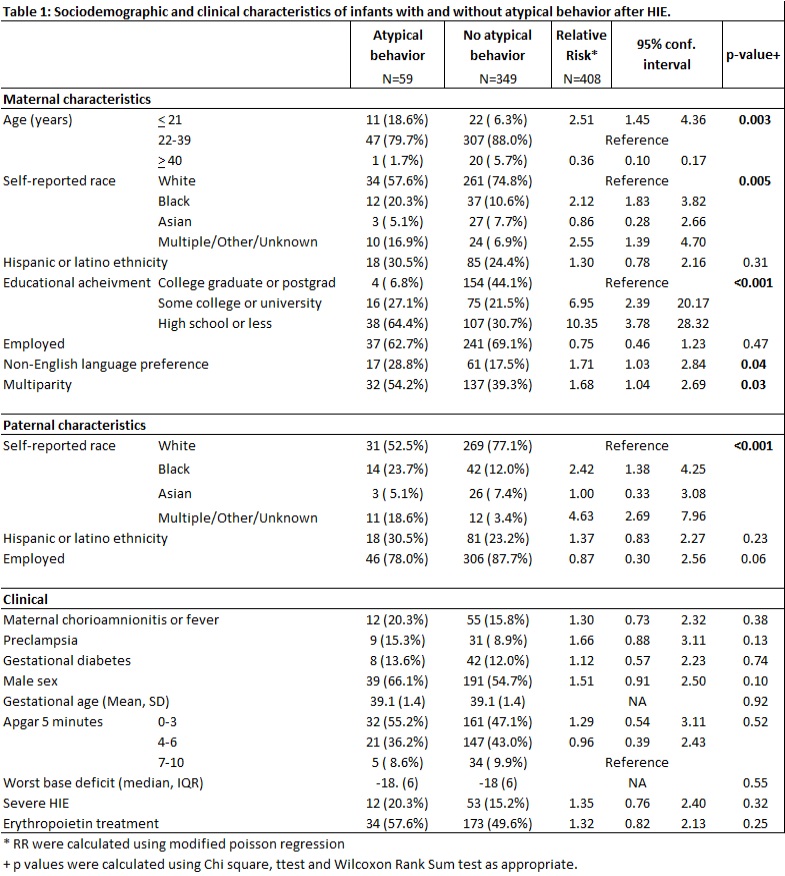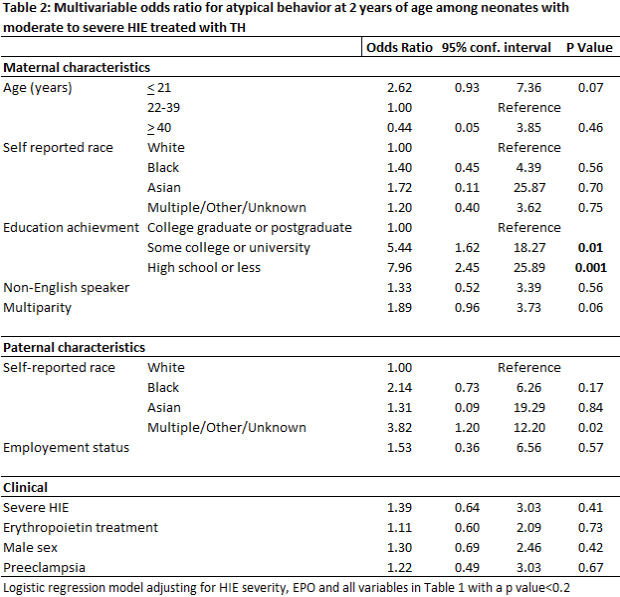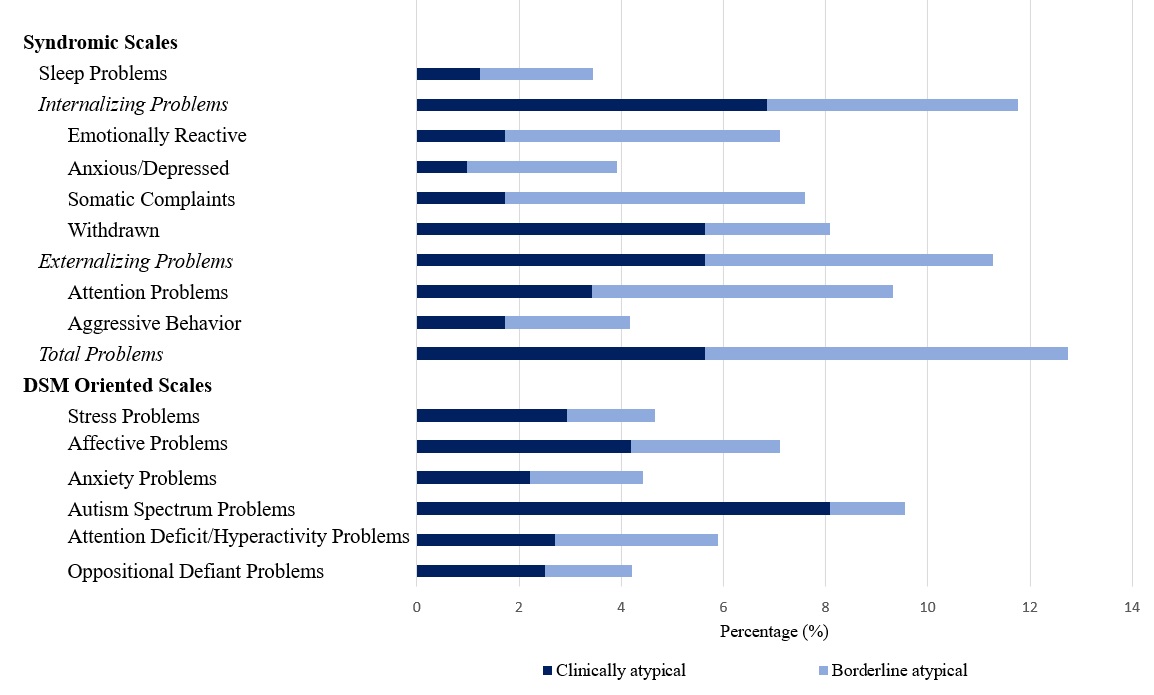Neonatology
Session: Neonatal Neurology 10: Neurodevelopment
349 - Sociodemographic Characteristics and Behavioral Outcomes in Infants with Hypoxic-Ischemic Encephalopathy
Monday, May 6, 2024
9:30 AM - 11:30 AM ET
Poster Number: 349
Publication Number: 349.3121
Publication Number: 349.3121

Emily S. Taketa, BS (she/her/hers)
Medical Student
University of California, San Francisco, School of Medicine
San Francisco, California, United States
Presenting Author(s)
Background: Despite therapeutic hypothermia, half the infants with hypoxic-ischemic encephalopathy (HIE) die or have neurodevelopmental impairment. The frequency, characteristics, and risk factors for atypical behavior after HIE remain unclear.
Objective: To characterize the behavioral outcomes of HIE survivors at 2 years of age, and to identify sociodemographic and clinical risk factors for atypical behavior.
Design/Methods: In this secondary analysis of the HEAL Trial (NCT# 02811263), infants with moderate or severe HIE whose caregivers completed the Child Behavior Checklist (CBCL) at two years (i.e., 22-36 months) of age were included. We defined the primary outcome "atypical behavior" as having > 1 behavior rated as clinically significant on the CBCL. We further describe the types and frequencies of all clinically atypical and borderline atypical behaviors. We analyzed the associations between sociodemographic, maternal, and infant clinical factors, and atypical behavior using Chi-squared, Fisher’s Exact test, and t-test as appropriate. Using logistic regression, we evaluated the associations between sociodemographic factors and atypical behavior, adjusting for potential confounders.
Results: Among 435 HIE survivors, 408 (94%) had CBCL data available and comprised the study population. A total of 59 (14%) had at least one atypical behavior at age 2 years, and 33 (8%) had more than one. The most common atypical behaviors were autism spectrum problems (8%), withdrawn (6%), and attention problems (4%, Figure 1). A total of 95 (24%) infants had > 1 borderline atypical behavior. On univariate analysis, maternal factors associated with a higher risk of atypical behavior included younger age, lower education attainment, identifying as Black, and having a non-English language preference (Table 1). In multivariate analysis, lower maternal education was the only independent risk factor for atypical behavior; compared to infants whose mothers completed college, those whose mothers did not finish college (OR 5.4, 95% CI 1.6-18) or never attended college (OR 8.0, 95% CI 2.5-25.9) had a significantly higher risk of atypical behavior. Other sociodemographic and clinical factors were not significantly associated with atypical behavior (Table 2).
Conclusion(s): Among survivors of HIE, maternal educational attainment was independently associated with the risk of atypical behavior, whereas clinical severity of HIE was not. These findings highlight the importance of social drivers of health in recovery following HIE and identify potential opportunities to improve health equity.



